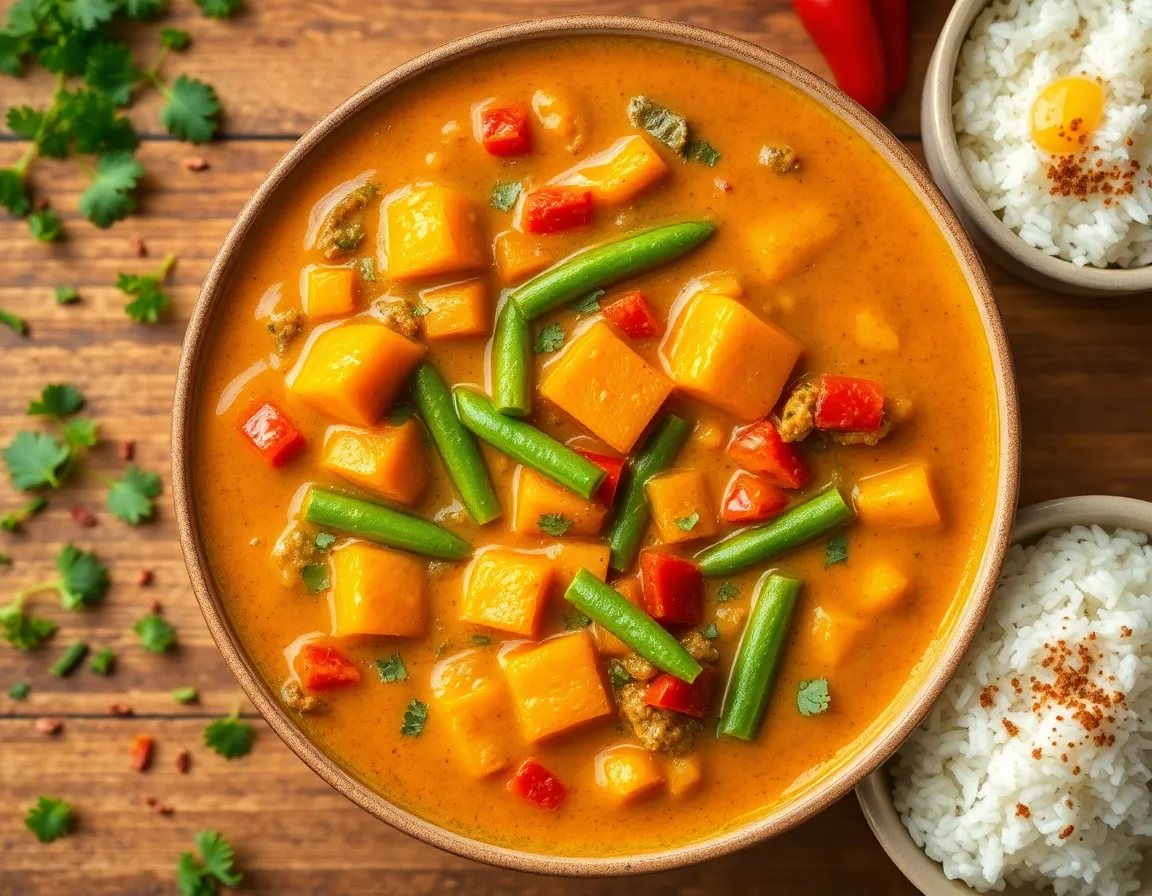Embark on a culinary adventure with our Vegetable Curry Recipe, where vibrant colors and aromatic spices come together to create a symphony of flavors. Whether you’re a beginner eager to explore the world of spices or an experienced cook looking to perfect your curry game, this recipe offers a delightful journey for your taste buds. Imagine the rich scent of cumin and coriander mingling with the sweetness of coconut milk, creating a dish that’s both comforting and exotic.
What makes this recipe truly special is its versatility and depth of flavor. With a medley of seasonal vegetables at its heart, this curry bursts with freshness and nutrients, while hints of ginger and garlic add warmth and complexity. Get ready to fill your kitchen with the intoxicating aroma of this dish, and feel confident knowing that a delicious, homemade curry is well within your reach.
About This vegetable curry Recipe
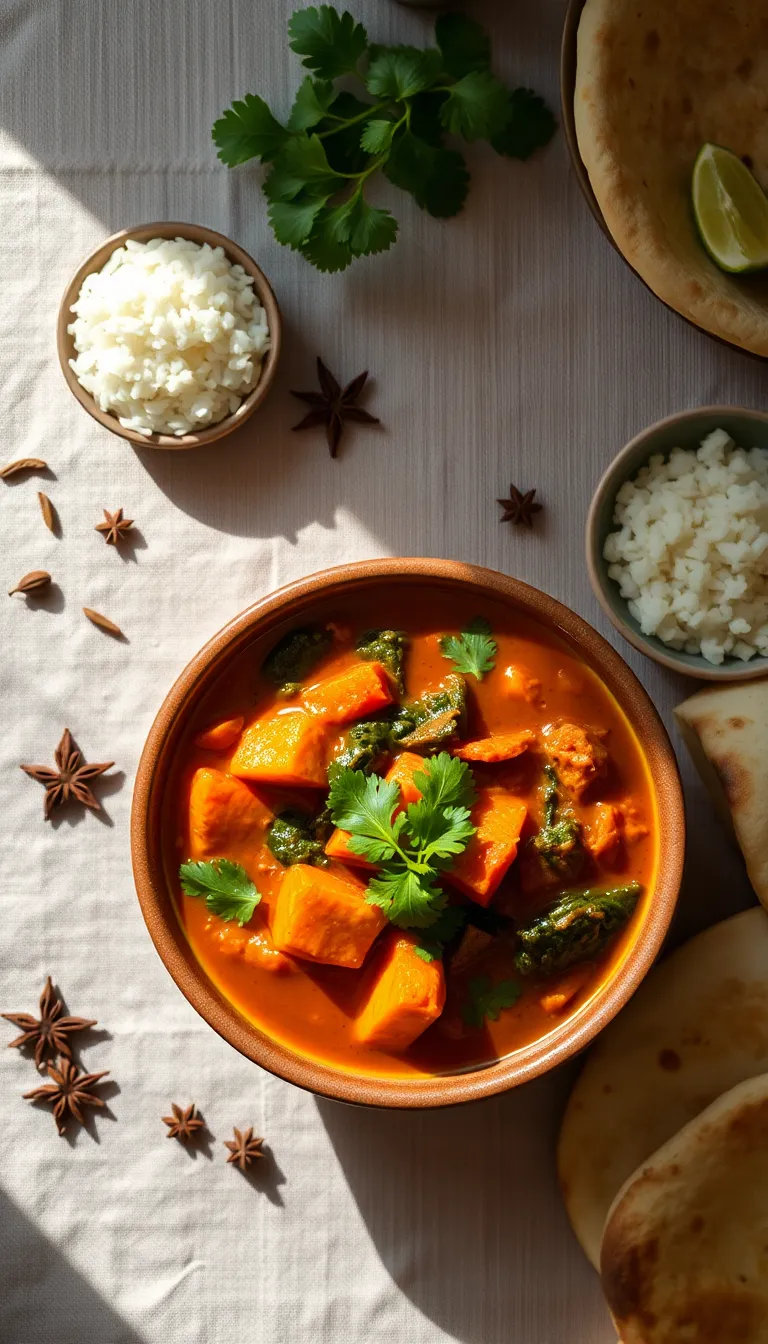
- Flavor Explosion: This vegetable curry is a delightful mix of spices and herbs that creates a rich and aromatic flavor profile, sure to tantalize your taste buds.
- Quick and Easy: Ready in under 30 minutes, this recipe is perfect for busy weeknights when you need a wholesome meal without the fuss.
- Nutrient-Rich: Packed with a variety of colorful vegetables, this dish is not only delicious but also a great source of vitamins and minerals.
- Versatile and Customizable: Easily adapt this recipe with your favorite veggies or add protein like chickpeas or tofu to suit your dietary needs.
- Perfect for Meal Prep: Make a big batch and enjoy flavorful leftovers throughout the week, saving you time and effort in the kitchen.
- Vegan and Gluten-Free: This curry caters to a wide range of dietary preferences, making it an inclusive dish for everyone to enjoy.
Why You’ll Love This Recipe
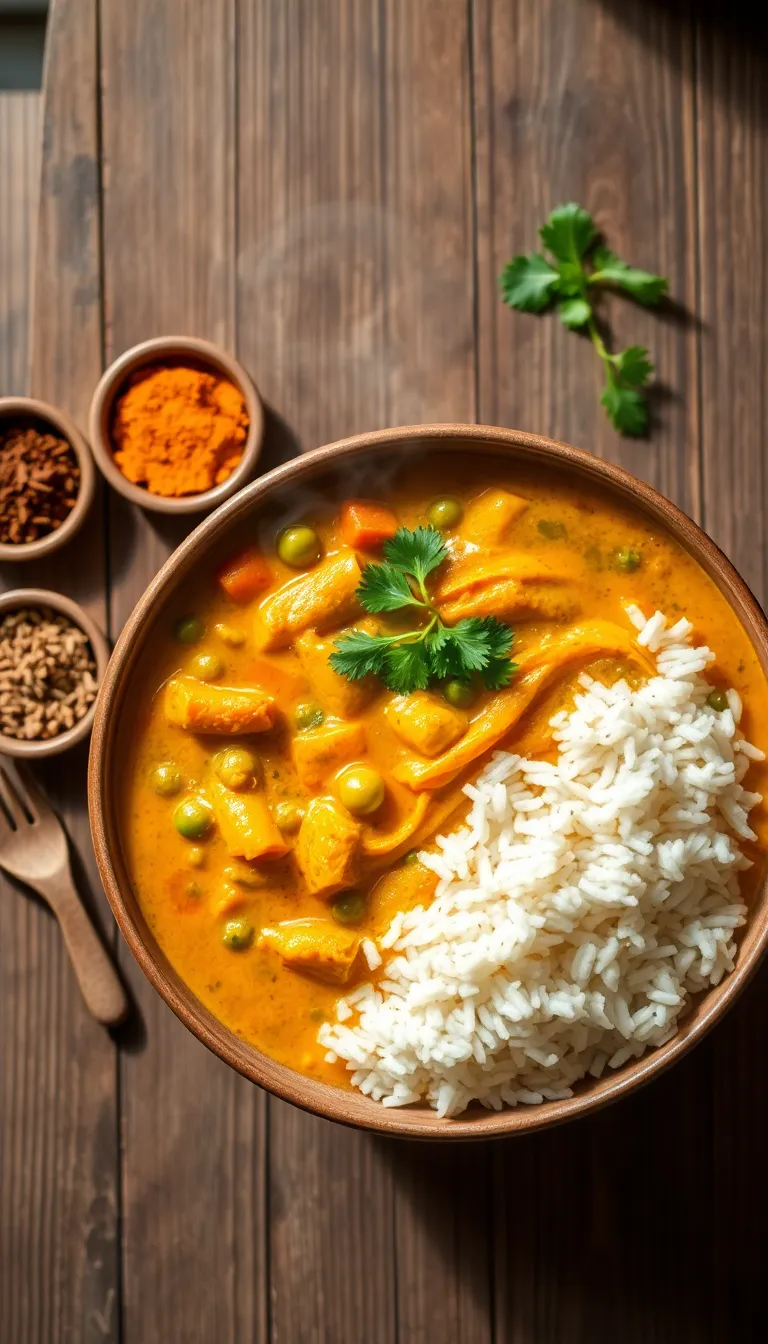
- Quick and Easy: This vegetable curry is a time-saver, ready in just 30 minutes, making it perfect for busy weeknight dinners.
- Flavor Explosion: A delightful blend of spices creates a rich and aromatic flavor profile that will tantalize your taste buds.
- Nutrient-Packed: Loaded with fresh vegetables, this recipe is not only delicious but also a great source of essential vitamins and minerals.
- Customizable: Easily adapt the recipe to suit your taste preferences or dietary needs by swapping in your favorite veggies or adding protein.
- Comforting and Satisfying: This curry is a warm and hearty dish that provides a comforting and satisfying meal any time of the year.
- Vegan and Gluten-Free: A perfect choice for those following vegan and gluten-free diets without compromising on taste or texture.
Ingredients
- 2 tablespoons vegetable oil
- 1 large onion, finely chopped
- 2 cloves garlic, minced
- 1 tablespoon fresh ginger, grated
- 1 teaspoon cumin seeds
- 1 teaspoon mustard seeds
- 1 green chili, sliced (adjust to taste)
- 2 teaspoons ground coriander
- 1 teaspoon turmeric powder
- 1 teaspoon garam masala
- 1 teaspoon paprika
- 2 large tomatoes, chopped
- 1 cup cauliflower florets
- 1 cup green beans, cut into 1-inch pieces
- 1 cup carrots, sliced
- 1 cup peas (fresh or frozen)
- 2 cups vegetable broth or water
(for a creamier texture, you can substitute with coconut milk)
- Salt to taste
- 1 tablespoon lemon juice
- 1/4 cup fresh cilantro, chopped (for garnish)
- 1/4 cup unsalted cashews, roasted (optional)
Kitchen Tools You’ll Need
- Cutting Board: Essential for chopping vegetables safely and efficiently. If you don’t have one, ensure you use a clean, flat surface.
- Chef’s Knife: A sharp knife is crucial for dicing, slicing, and chopping the various vegetables needed for the curry. A paring knife can be used as an alternative for smaller tasks.
- Large Saucepan or Pot: Necessary for cooking the curry. It should be large enough to hold all the ingredients and allow for stirring. A Dutch oven can also be used.
- Wooden Spoon or Spatula: Ideal for stirring the curry as it simmers, ensuring even cooking and preventing sticking. A silicone spatula can also be used.
- Measuring Spoons: Used for accurately measuring spices and seasonings to achieve the perfect flavor balance.
- Measuring Cups: Important for measuring liquids and larger quantities of ingredients. If unavailable, you can use a kitchen scale as an alternative for precision.
- Colander: Useful for rinsing vegetables before cooking. If you don’t have a colander, a large sieve can be used as a substitute.
Preparation Steps
Preparation Steps
- Prepare the vegetables: Chop 1 large onion, 2 carrots, and 1 bell pepper into bite-sized pieces. Mince 3 cloves of garlic and 1 inch of ginger. Ensure all pieces are roughly the same size for even cooking.
- Sauté the aromatics: Heat 2 tablespoons of oil in a large pan over medium heat. Add the onion, garlic, and ginger, sautéing for 5 minutes until the onion is translucent and fragrant.
- Cook the vegetables: Add the carrots and bell pepper to the pan. Cook for 7-10 minutes, stirring occasionally, until the vegetables are slightly softened and starting to brown.
- Add spices and liquids: Stir in 2 tablespoons of curry powder and cook for 1 minute until fragrant. Pour in 1 can of coconut milk and 1 cup of vegetable broth, stirring to combine.
- Simmer the curry: Bring the mixture to a gentle simmer, then reduce the heat to low. Cover and cook for 15-20 minutes, or until the vegetables are tender and the sauce has thickened slightly. Stir occasionally to prevent sticking.
- Season and serve: Taste the curry and add salt and pepper to taste. Serve hot over rice or with naan bread, garnished with fresh cilantro if desired.
Serving Suggestions
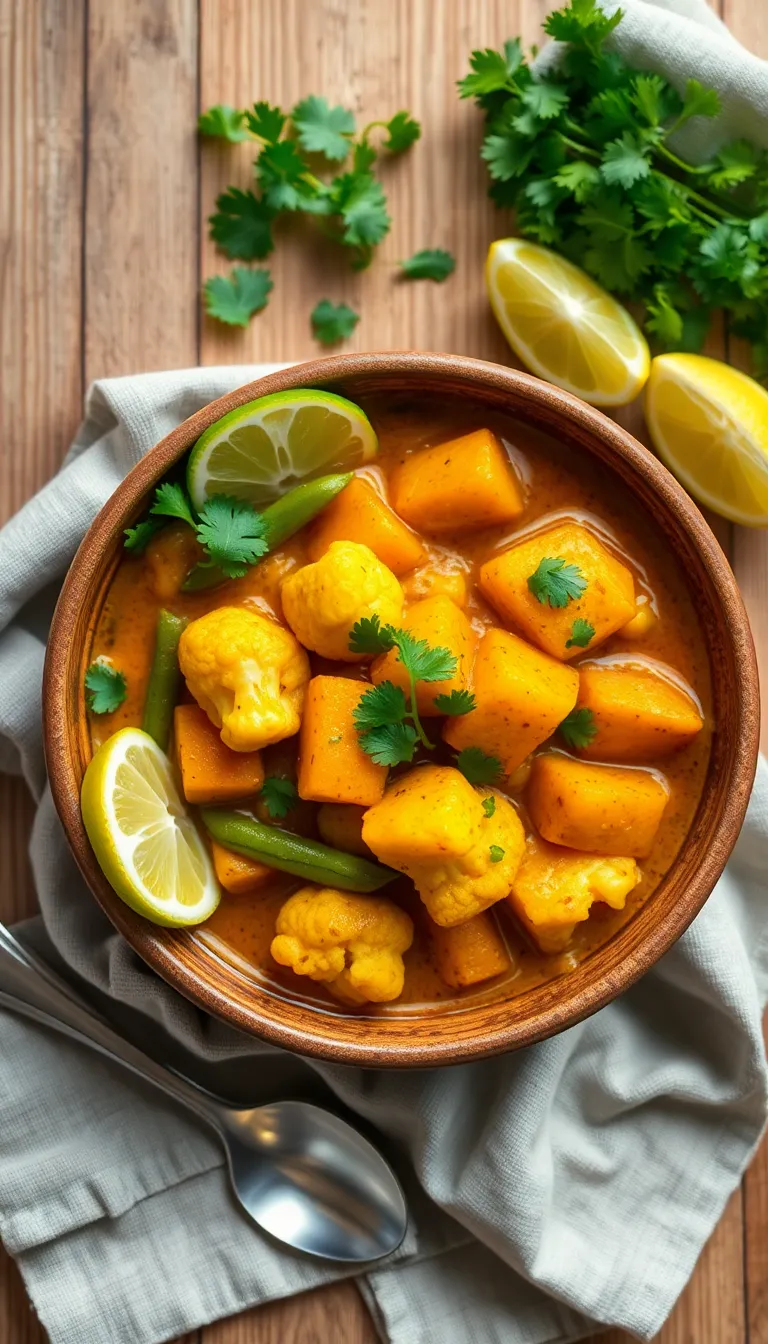
- Serve with Steamed Basmati Rice: The fragrant aroma of basmati rice complements the spices in the vegetable curry, creating a balanced and satisfying meal. The rice’s neutral flavor allows the curry’s vibrant flavors to shine.
- Pair with Warm Naan Bread: Soft, fluffy naan is perfect for scooping up the rich, saucy curry. Its slightly chewy texture adds a delightful contrast to the tender vegetables in the dish.
- Garnish with Fresh Cilantro and Lime Wedges: A sprinkle of fresh cilantro adds a pop of color and a refreshing herbal note, while a squeeze of lime juice enhances the curry’s flavor with a bright, zesty finish.
- Accompany with Raita: This cooling yogurt-based condiment, with cucumber and mint, balances the heat of the curry and adds a creamy element, making it an excellent side dish for spice-sensitive guests.
- Enjoy with Chilled Mango Lassi: This sweet, creamy yogurt drink pairs beautifully with spicy dishes, offering a refreshing contrast and a touch of indulgence to your meal.
- Serve at a Dinner Party with Papadums: These crispy, thin crackers provide a delightful crunch and are great for starting a meal. They also add an element of fun to the dining experience when served alongside the curry.
Pro Tips for Perfect Results
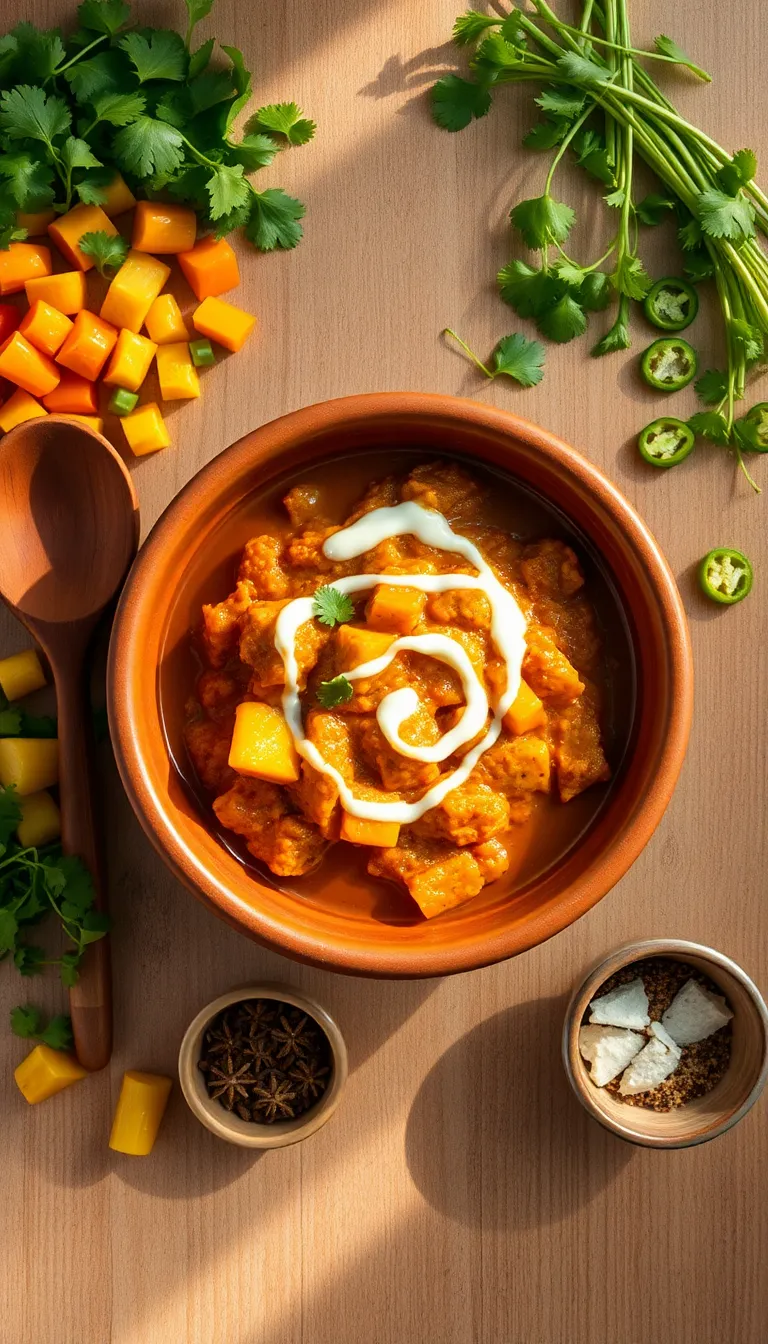
- Bloom Your Spices: To maximize flavor, toast your spices in a dry pan over medium heat until they’re fragrant before adding them to the curry. This process enhances the spices’ natural oils and brings out deeper aromas.
- Layer Your Aromatics: Sauté onions, garlic, and ginger slowly over low heat before adding other ingredients. Allow them to caramelize slightly to build a rich flavor base for your curry.
- Use Coconut Milk Wisely: Stir in coconut milk towards the end of cooking and let it simmer gently. Avoid boiling, which can cause the milk to separate and lose its creamy texture.
- Balance Acidity: After cooking, taste the curry and add a splash of lime juice or a few drops of apple cider vinegar to brighten the flavors and balance the richness of the dish.
- Make-Ahead for Depth: Prepare the curry a day in advance and refrigerate it overnight. The flavors will meld and deepen, resulting in an even more delicious dish when reheated.
- Chef’s Secret: Infuse with Fresh Herbs: Just before serving, add a handful of fresh cilantro or basil. Gently crush the herbs in your hands to release their essential oils, infusing the curry with a fresh, vibrant aroma.
Common Mistakes to Avoid
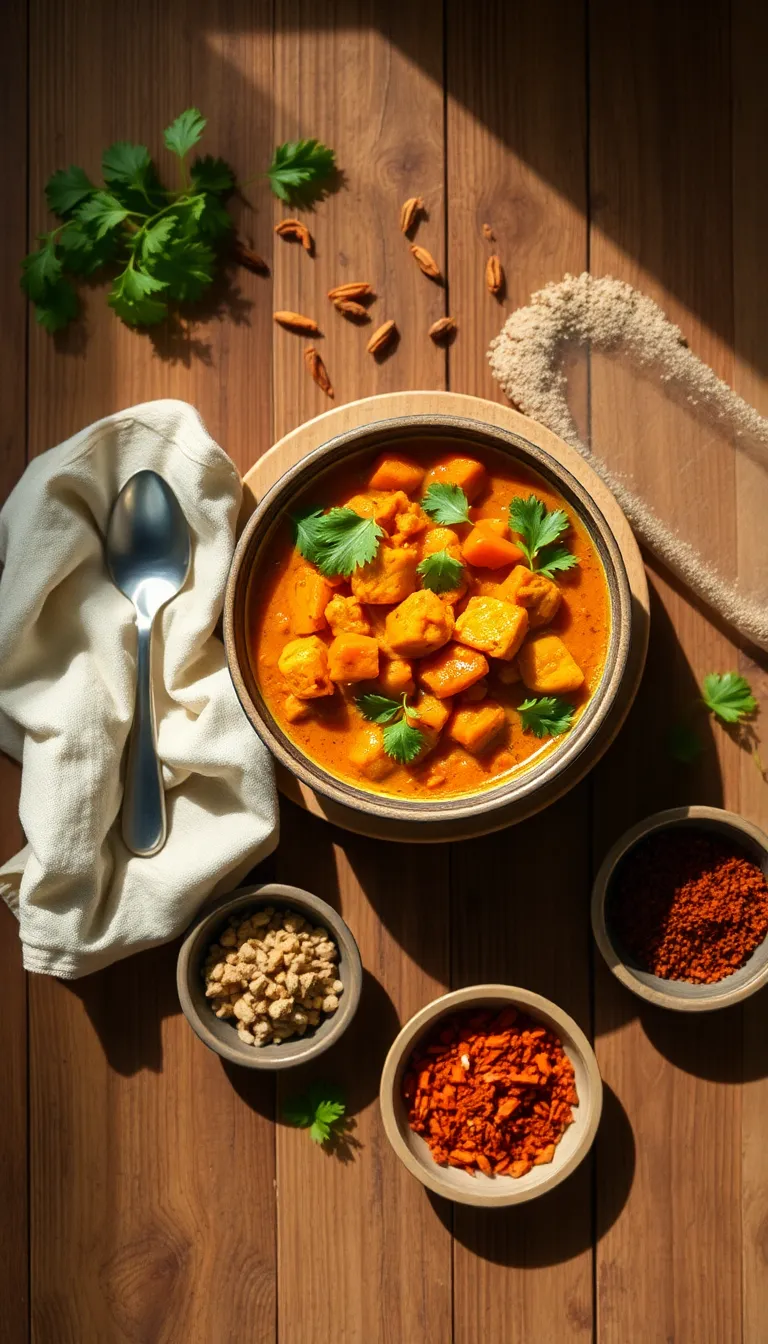
- Skipping the Sautéing Step: Many cooks overlook the importance of sautéing the spices and aromatics, which can lead to a bland curry. This step helps release essential oils and flavors, enhancing the dish’s depth. Ensure you sauté spices in oil until fragrant before adding other ingredients.
- Overcooking Vegetables: Cooking vegetables for too long can make them mushy and less appetizing. To maintain texture and nutrients, add vegetables according to their cooking times, starting with those that take longer and adding quicker-cooking items later.
- Using Low-Quality Curry Powder: The flavor of your curry heavily depends on the quality of the curry powder or paste. Using outdated or low-quality spices can result in a flat dish. Invest in fresh, high-quality curry powder or consider making your own blend for the best results.
- Not Allowing Enough Simmering Time: Rushing the simmering process can prevent flavors from fully developing and melding together. Allow your curry to simmer gently for at least 20-30 minutes. This will help the flavors intensify and create a more cohesive dish.
- Incorrect Use of Salt: Adding too much salt too early can make the curry overly salty as it reduces. Taste as you cook and adjust seasoning towards the end of cooking, allowing the flavors to balance without overwhelming the dish.
Storage and Reheating Tips
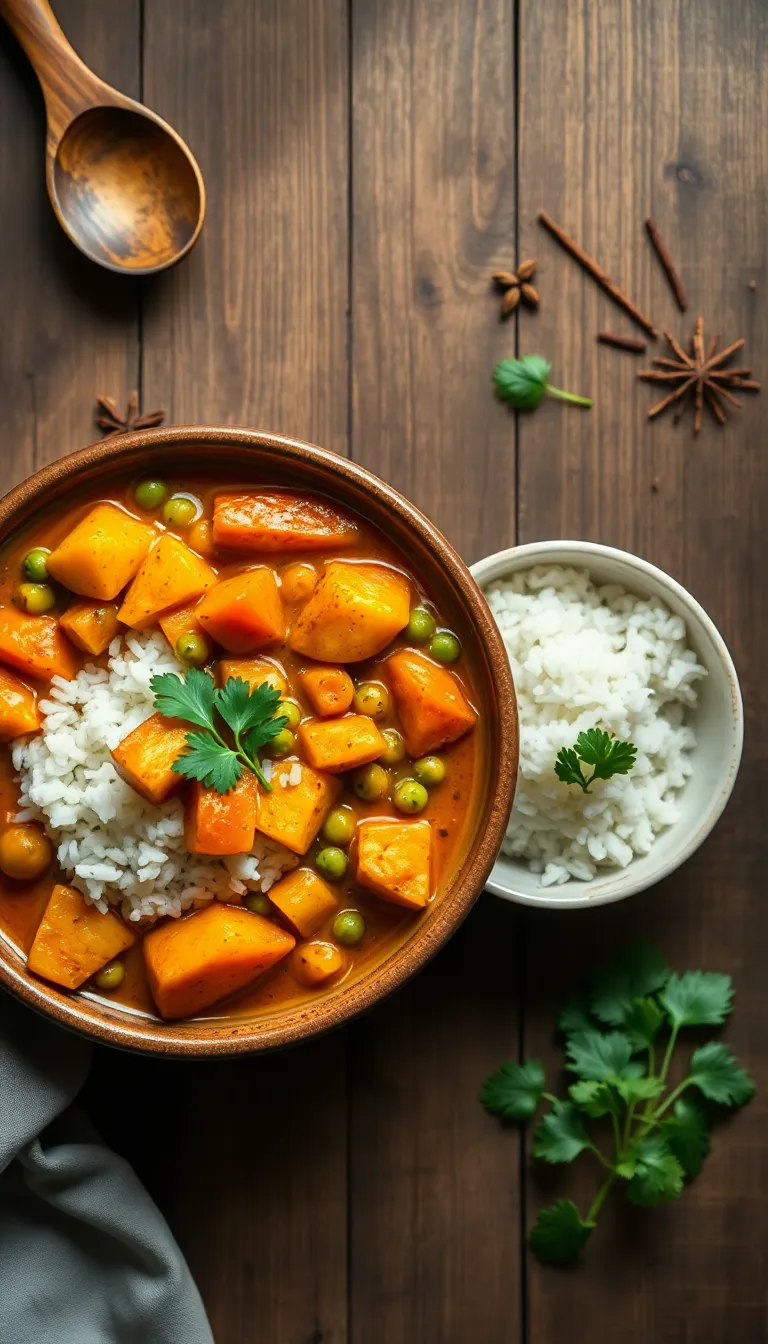
- Store the vegetable curry in an airtight container to maintain freshness and prevent odor absorption in the refrigerator.
- Refrigerate the curry within two hours of cooking to avoid bacterial growth. It can be stored in the refrigerator for up to 4 days.
- If you plan to freeze the curry, divide it into individual portions and place them in freezer-safe containers or heavy-duty freezer bags. Ensure you remove as much air as possible to prevent freezer burn.
- Label the containers with the date of storage. The curry can be frozen for up to 3 months for the best quality.
- When ready to reheat, thaw the frozen curry in the refrigerator overnight. Avoid thawing at room temperature to prevent the risk of bacterial growth.
- Reheat the curry on the stovetop over medium heat, stirring occasionally to ensure even heating and prevent sticking. Add a splash of water or coconut milk if the curry has thickened too much.
- Alternatively, you can reheat the curry in the microwave. Use a microwave-safe dish and cover it with a microwave-safe lid or wrap. Heat in short intervals, stirring in between to ensure even heating.
- Food Safety Tip: Always reheat leftovers to an internal temperature of 165°F (74°C) to ensure they are safe to eat.
- Do not refreeze curry that has been previously frozen and thawed, as this can compromise both safety and quality.
Frequently Asked Questions
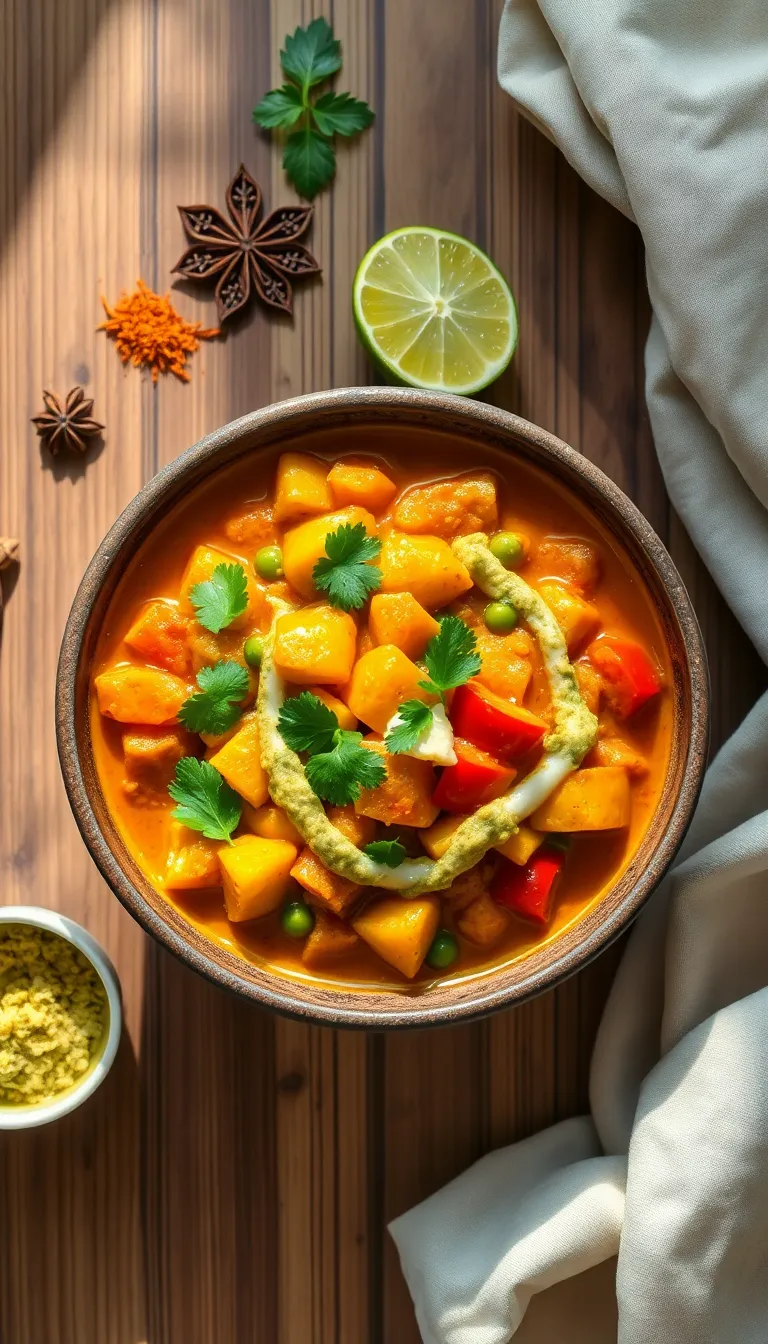
Q: Can I use frozen vegetables instead of fresh ones for this vegetable curry?
- Yes, you can use frozen vegetables. Just make sure to thaw them slightly and drain any excess water before adding them to the curry to prevent it from becoming too watery.
Q: What type of curry powder should I use?
- Use any curry powder you prefer, but a mild or medium blend works best if you’re unsure. You can also mix different spices like cumin, coriander, and turmeric for a homemade blend.
Q: How can I make this curry spicier?
- Add more chili powder or fresh chilies to increase the heat. You could also use a spicier curry powder or include a dash of cayenne pepper.
Q: Is it possible to make this curry in advance?
- Yes, this curry can be made a day ahead. The flavors often improve after sitting overnight, and you can store it in the refrigerator for up to three days.
Q: Can I add protein to this vegetable curry?
- Absolutely! Chickpeas, tofu, or paneer are great additions that complement the vegetables and add protein to the dish.
Q: My curry turned out too thick. How can I fix it?
- Simply add some vegetable broth or water to thin it out to your desired consistency, and adjust the seasoning if needed.
Final Thoughts
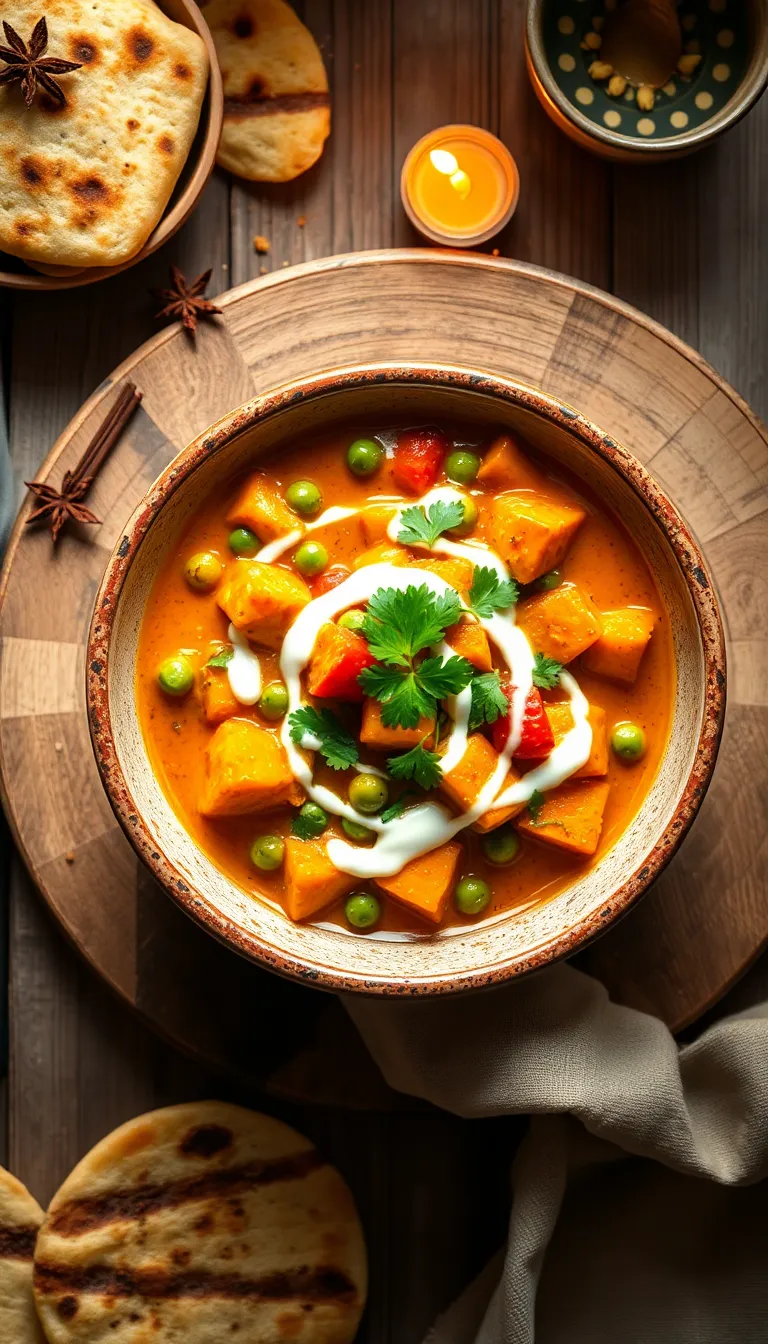
Our Vegetable Curry Recipe is a delightful exploration of flavors and textures, offering a wholesome mix of vibrant vegetables and aromatic spices. What makes this recipe special is its versatility and the ability to be customized according to your taste preferences. With each bite, you’ll discover a new depth of flavor that keeps you coming back for more.
Feel free to make this dish your own by experimenting with different vegetables or spice levels to suit your palate. Cooking is an adventure, and this recipe is your map to a delicious destination. Don’t hesitate to add your unique twist to create something truly personal and satisfying.
We hope you feel inspired to try this Vegetable Curry Recipe in your kitchen. Its simplicity and rich flavors make it a perfect choice for both weekday meals and special occasions. Enjoy the cooking process and savor each flavorful bite!

I’m Jonny, the cook, writer, and food lover behind this flavorful corner of the internet. Whether it’s a sizzling weeknight stir-fry, a no-bake dessert that saves the day, or a comforting Sunday classic — this blog is where I share recipes that are bold, doable, and made to impress without the stress.

